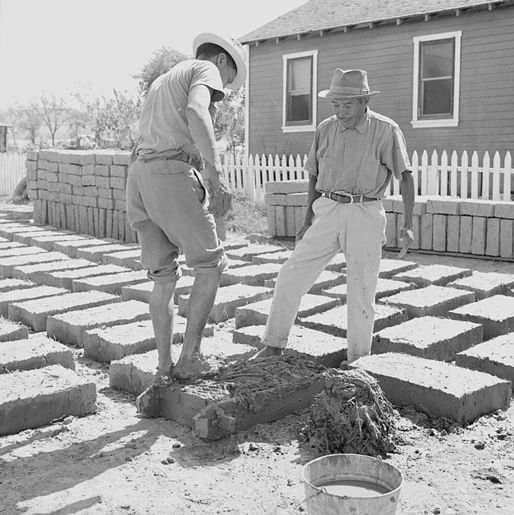
It’s easy to forget that Irvine, the minutely planned southern California city awash in tract housing and shopping complexes, was regarded as a pretty radical place at the time of its 1971 incorporation. Almost entirely ranchland up until the mid-1900s, the area that would become Irvine jump-started its urban development as the egg-white to the University of California’s yolk. Looking for land to accommodate expanding enrollment, the UC bought a large chunk of dusty land owned by the Irvine Company to establish a new campus, adding surrounding territory for residential and commercial development. The school isn’t named after the city -- both are named after the Irvine Company. City and campus were master-planned by architect William Pereira, and the University opened in 1965, still largely unfinished but marked by Pereira’s concrete brutalism and Olmsted’s New York Central Park plan.

In the era of this extremely young urban territory, beginning in 1968, UC Irvine began an experimental research effort called the Social Sciences Farm. Known simply as “The Farm”, the experiment and its effect on social science pedagogy is the subject of the beautifully composed Learning by Doing at the Farm: Craft, Science, and Counterculture in Modern California, a book of photos and documents curated by UCI doctoral candidates Robert Kett (Cultural Anthropology) and Anna Kryczka (Visual Studies). Established on an abandoned farm on the outskirts of the UCI campus, The Farm was a community of indigenous people from Guatemala, Mexico and Samoa, invited by Social Science faculty to demonstrate their native craft techniques for Irvine student's anthropological study. The program was an attempt to bring the field home to the students, and in its few months of existence attracted an unanticipated group of inhabitants from the concurrent countercultural movement.


Kett and Kryczka presented their work to an intimate crowd at the A+D Museum last Tuesday night, screening archival footage of craftsmen working on The Farm and the early days of UCI. In both chastising and endearing tones, the UCI campus was referred to as an “instant university”, critiquing Pereira’s somewhat arbitrary style and Irvine's master plan in the blank context of land with no visible architectural heritage. The strongest environmental influence (at the beginning, at least) was the sun, its brutal rays met with brutalist concrete shades. This style of development in Irvine ushered in a new era of real estate common to large, suburban tract housing. At the time, this was a pretty drastic move, albeit one completely separate from the radicalism of the countercultural hippies who occupied the Farm.


Learning By Doing at the Farm is a very timely book, looking back on 1960s counterculture after Occupy, as well as early computing in the fray of big data and questions of the quantified self. UCI’s School of Social Sciences, the operators of The Farm, recorded and analyzed the Farm’s inhabitants’ activities with new computer punch card technology -- attempting to quantify human behavior and develop generalist behavioral laws. This techno-utopianism stands in rough contrast to the Farm’s romanticized curation of ancient craft and construction methods as indicators of universalist cultural tropes. Perhaps by passing through the computer, these “soft” science numbers could be regarded as hard, legitimate data, despite the biases inherent to importing indigenous culture into Pereira's alien landscape.


Kett and Kryczka’s book explores the shifting fault lines of fact, data, architecture and habitat, as The Farm attempts to simultaneously reconstitute and quantify indigenous cultures within the Instant City’s laboratory. It’s a book about data, place, and the humanity of informatics.
The book is available for order through Soberscove Press.
3 Comments
Old school.
<thumbs up>
I know, so cool. We need more hippies in the world. And more people who know how to do things rather than only knowing how to talk about things.
(For the record, I'm not especially good at either.)
I tore apart my oldest computer over the weekend. It is not like I haven't done it before. However this time I was a bit more aggressive. I was getting a lot of noise from the fan so I figured it was on it's way out. So I watched a few U-tube videos and figured what the heck. It is not like I haven't been under the hood before on this computer, but usually it is just to clean the inside of the computer of dust bunnies. This time I took the fan out and did a good cleaning popped the seal and gave the fan bushings a good oiling and put it all back together and fired up the machine and it still is making a noise but not as bad so I ordered a new fan so I can replace the one I have. Funny thing is the new fan delivered only cost $7.15.
Word of caution for anyone undertaking such a task. Take lots of photographs prior to tearing everything apart. As there are usually three or four different screw types one has to put back in the right place. Take Photographs as your taking it apart as they will come in handy, when you discover your going to need some additional item from the store. So when you get back, your not scratching your head and saying oh where did that screw go.
Block this user
Are you sure you want to block this user and hide all related comments throughout the site?
Archinect
This is your first comment on Archinect. Your comment will be visible once approved.